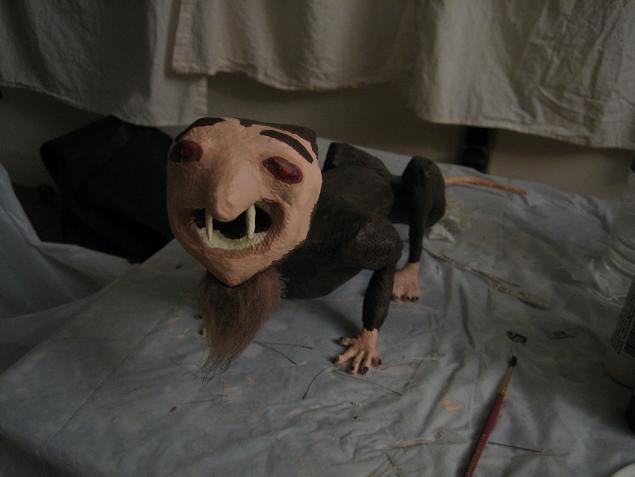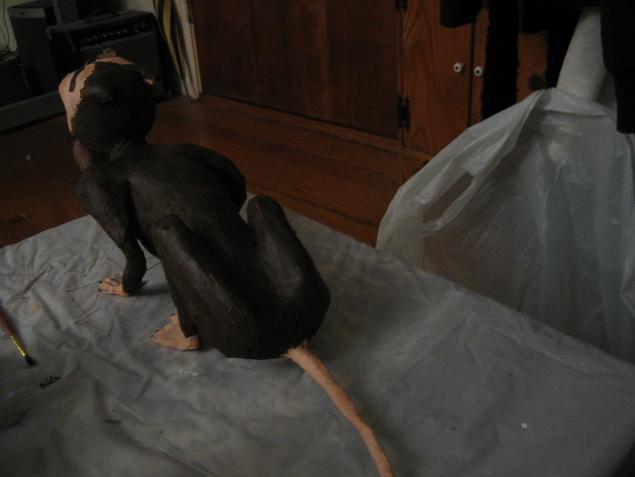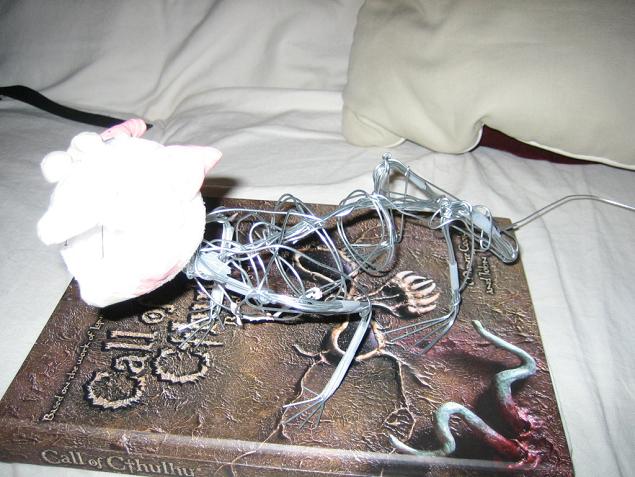
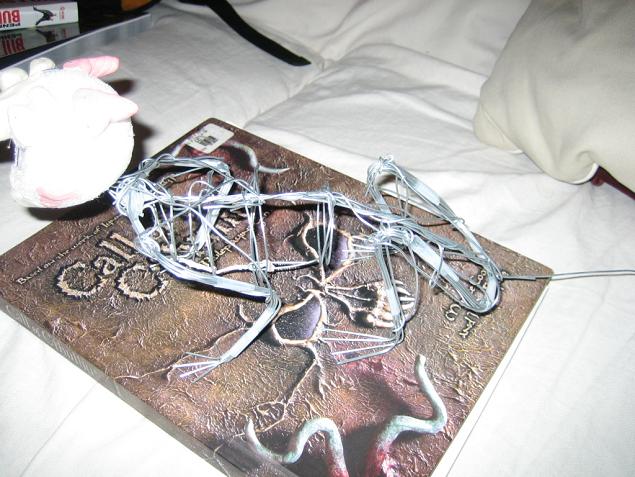
Keziah's familiar, Brown Jenkin, is such a continuous presence throughout the story that he needed to be included in this project somehow. My initial idea was to create some sort of Frankenstein monster out of a rubber rat and a doll, but instead I opted to create a model from scratch. From the descriptions in the story, the effect we're going for is a large rat with a human head, big fangs, and hands.
That object - no larger than a good-sized rat and quaintly called by the townspeople "Brown Jenkin" - seemed to have been the fruit of a remarkable case of sympathetic herd-delusion, for in 1692 no less than eleven persons had testified to glimpsing it. There were recent rumours, too, with a baffling and disconcerting amount of agreement. Witnesses said it had long hair and the shape of a rat, but that its sharp-toothed, bearded face was evilly human while its paws were like tiny human hands.
The horror would appear to pop out of the rat-hole in the corner and patter toward him over the sagging, wide-planked floor with evil expectancy in its tiny, bearded human face; but mercifully, this dream always melted away before the object got close enough to nuzzle him. It had hellishly long, sharp, canine teeth; Gilman tried to stop up the rat-hole every day, but each night the real tenants of the partitions would gnaw away the obstruction, whatever it might be.
Then he saw the fanged, bearded little face in the rat-hole - the accursed little face which he at last realized bore such a shocking, mocking resemblance to old Keziah's - and heard the faint fumbling at the door.
This object was the partly crushed skeleton of a huge diseased rat, whose abnormalities of form are still a topic of debate and source of singular reticence among the members of Miskatonic's department of comparative anatomy. Very little concerning this skeleton has leaked out, but the workmen who found it whisper in shocked tones about the long, brownish hairs with which it was associated. The bones of the tiny paws, it is rumoured, imply prehensile characteristics more typical of a diminutive monkey than of a rat, while the small skull with its savage yellow fangs is of the utmost anomalousness, appearing from certain angles like a miniature, monstrously degraded parody of a human skull.
The starting point of the model was the ratlike skeleton, formed out of 18-gauge wire, which is generally used in
floral arrangements. It's pliable enough to be easy to work with, but thick enough to retain its shape pretty well
once bent. I did a bit of Googling for images of rat skeletons to work from, and was able to come up with something
appproximating a rat in short order. I took special care to give the hands and feet five digits each and give them
humanlike dimensions, since Brown Jenkin's eerily human forepaws are mentioned a number of times in the story. The
head I made by carving a mouth out of a foam ball and then sculpting additional features out of clay.


The next step was covering this with skin, for which I used paper mache (newspaper soaked in a solution of water and
Elmer's Glue). The trickiest bit was getting the paper to stick to the smaller bits of wire, like the fingers and toes;
glue and water work well for sticking paper to paper, but not for sticking paper to metal. Once the first layer is on,
though, everything gets a lot easier. I also used crumpled newspaper to fill in a few gaps, such as the space between
the rib cage and pelvis that would ordinarily be occupied by internal organs (my first attempt involved clay, which was
far too heavy and threw the balance of everything off).
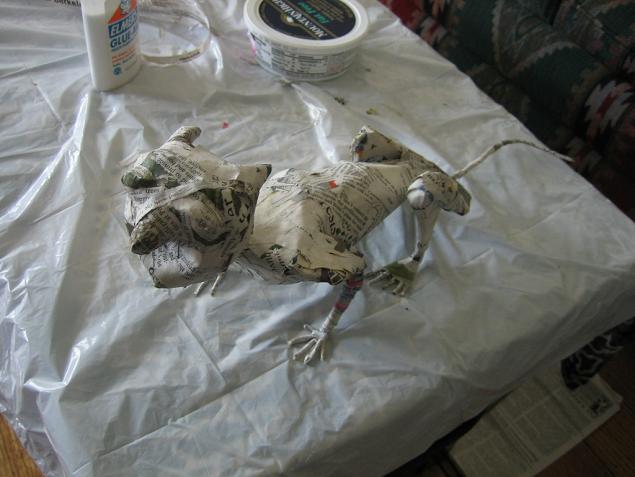
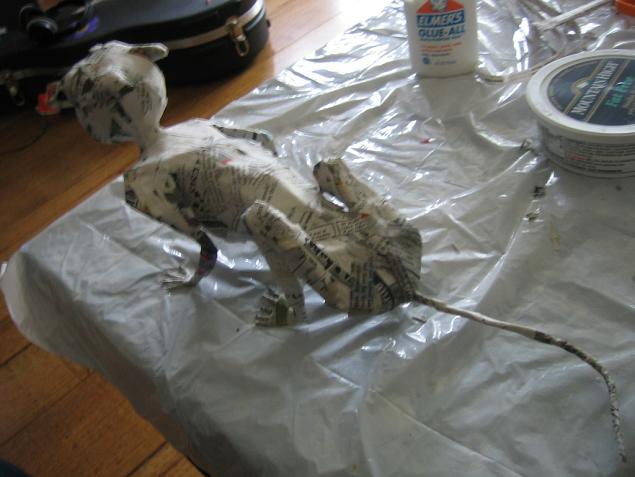
Since some parts, particularly the limbs, still looked a bit too skeletal, I used crumpled newspaper to add a bit of flesh to Brown Jenkin's bones. This was an iterative process; I'd add a wad of gluey wet paper to an area, hold it in place with a bunch of flat strips, look at the resulting shape, and repeat if necessary. This took a while but it did
do a pretty good job of hiding the more angular parts of the original skeleton. Once the general shape was defined, I started on the final layer of paper mache, using paper towels instead of newspaper; paper towels, being less rigid and more absorbent than newspaper, are less apt to peel up, so this final layer is largely to patch over the rough spots left by the initial layers of newspaper.
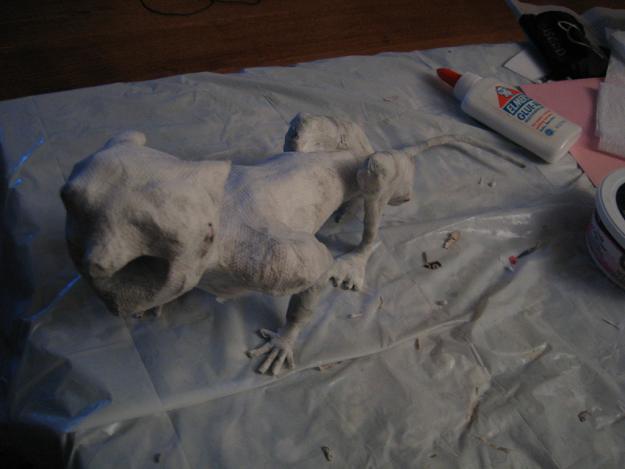
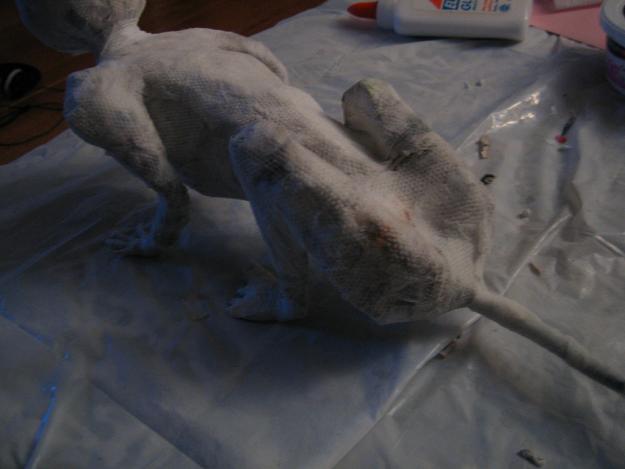
Teeth were made by tightly rolling paper mache around a couple of pins and then jamming them into the head with a liberal dose of glue. With the shape completed, then, it was time to paint. Nothing fancy here, but it did go a long way toward making the model recognizable.
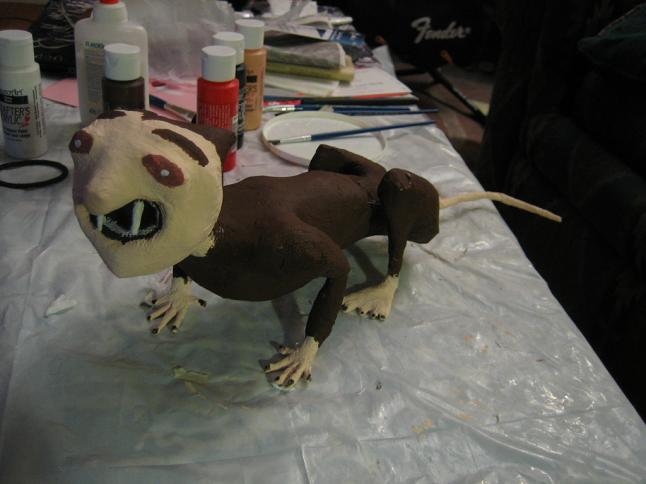
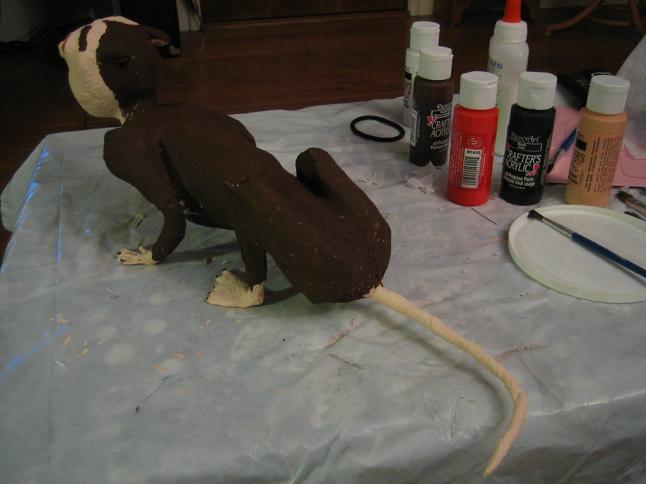
Additional layers of paint with slightly different shades helped to give the surface a bit more "texture". The fur ended up being composed of about six shades of brown streaked together, and for the skin I used slightly darker flesh tones to emphasize shadows, and slightly redder tones to create lips and eyelids. Once the paint was completely done I applied a layer of matte finish. The very last step was the beard, for which I used a small scrap of fake fur, superglued in place.
